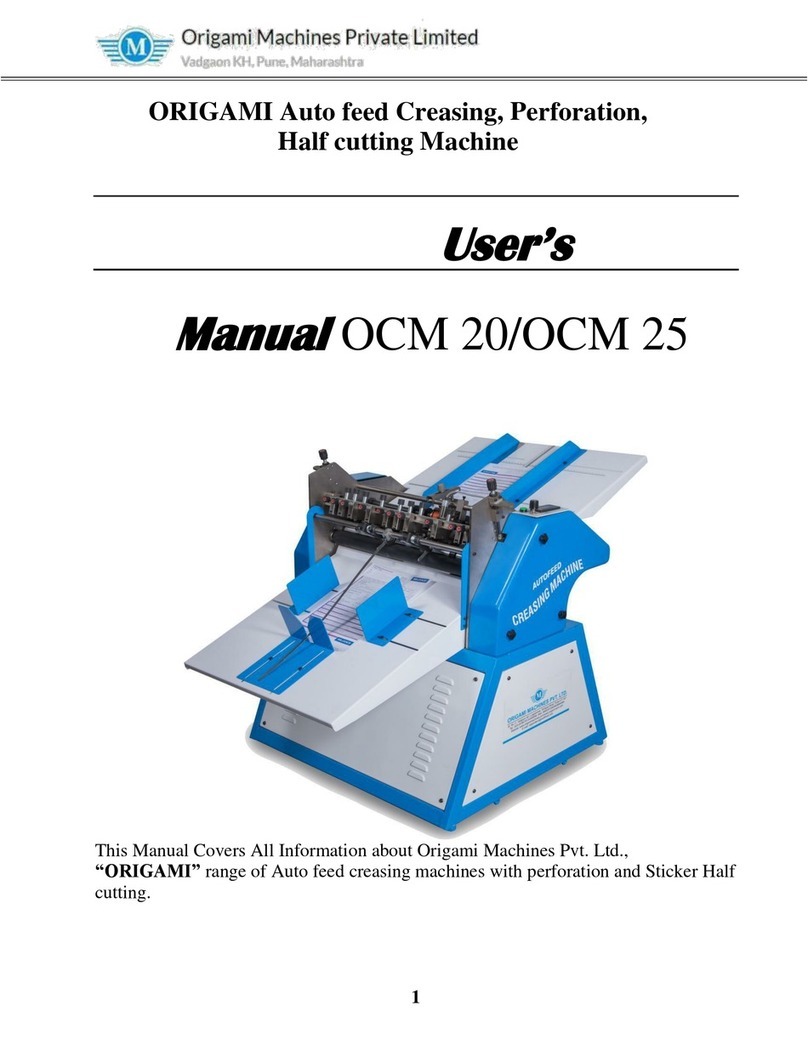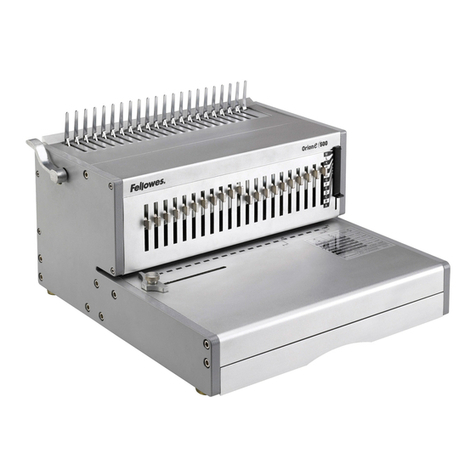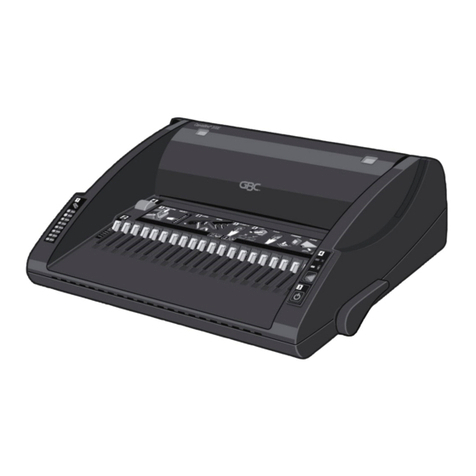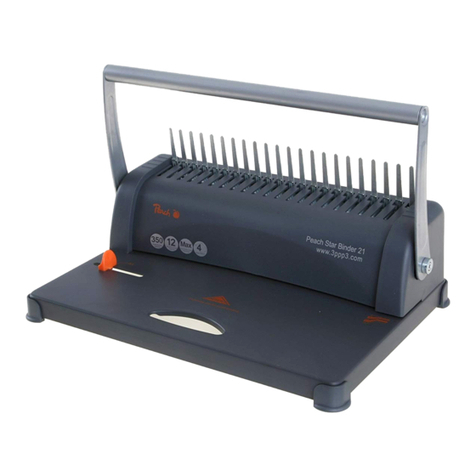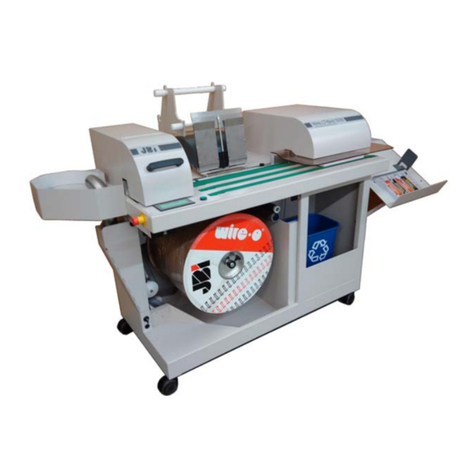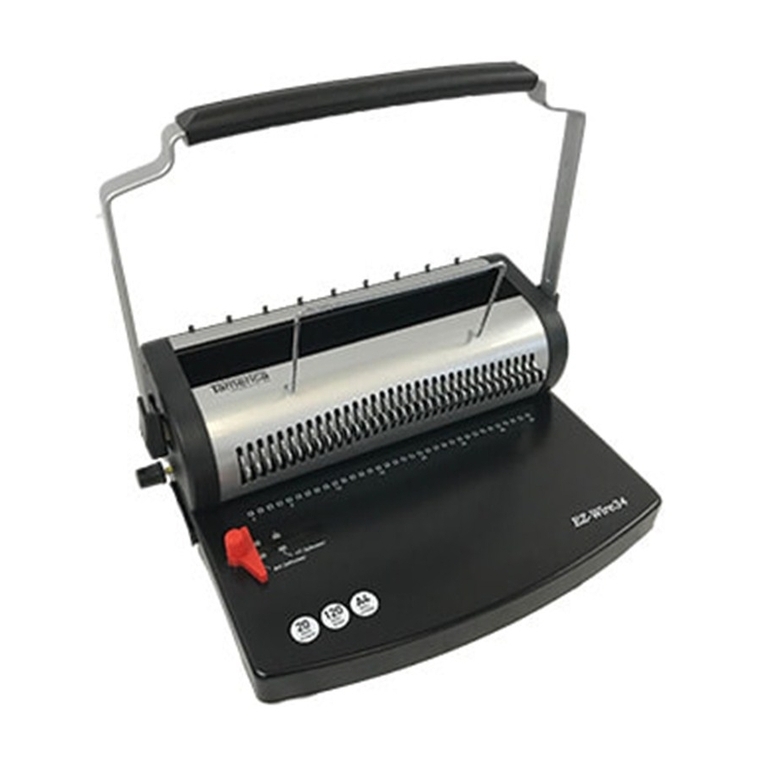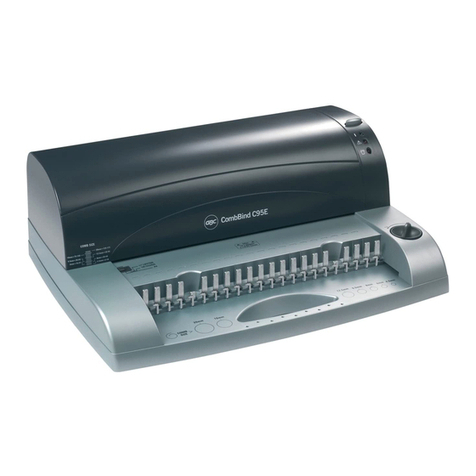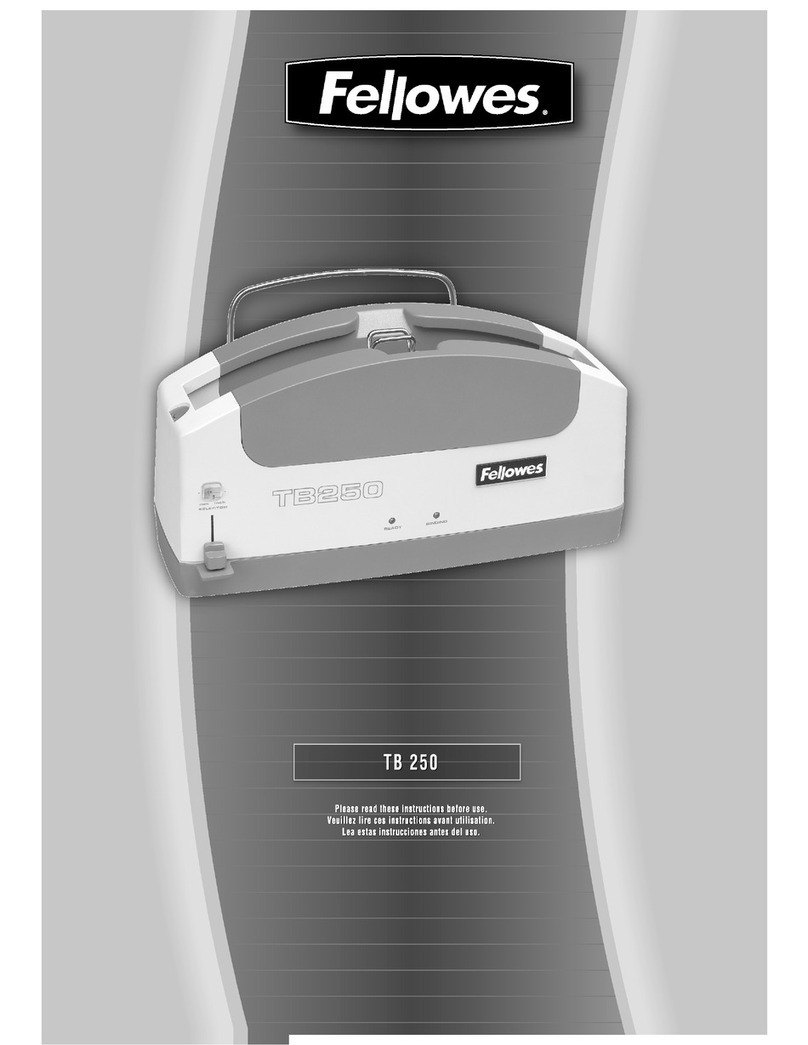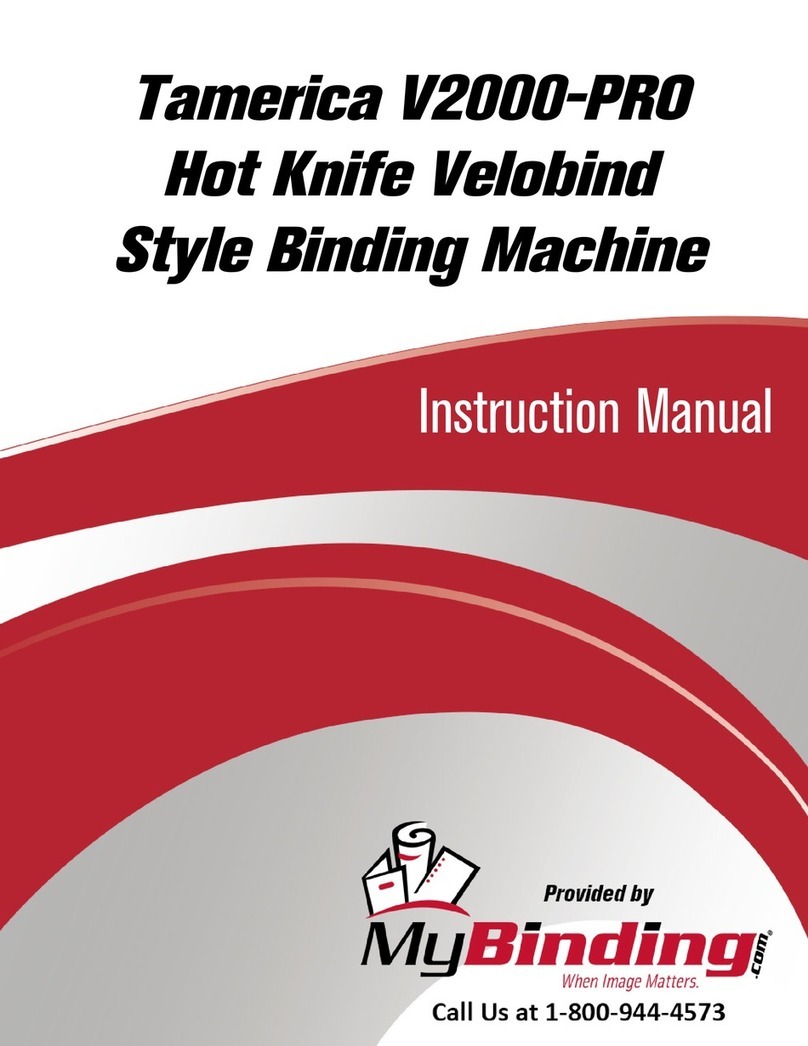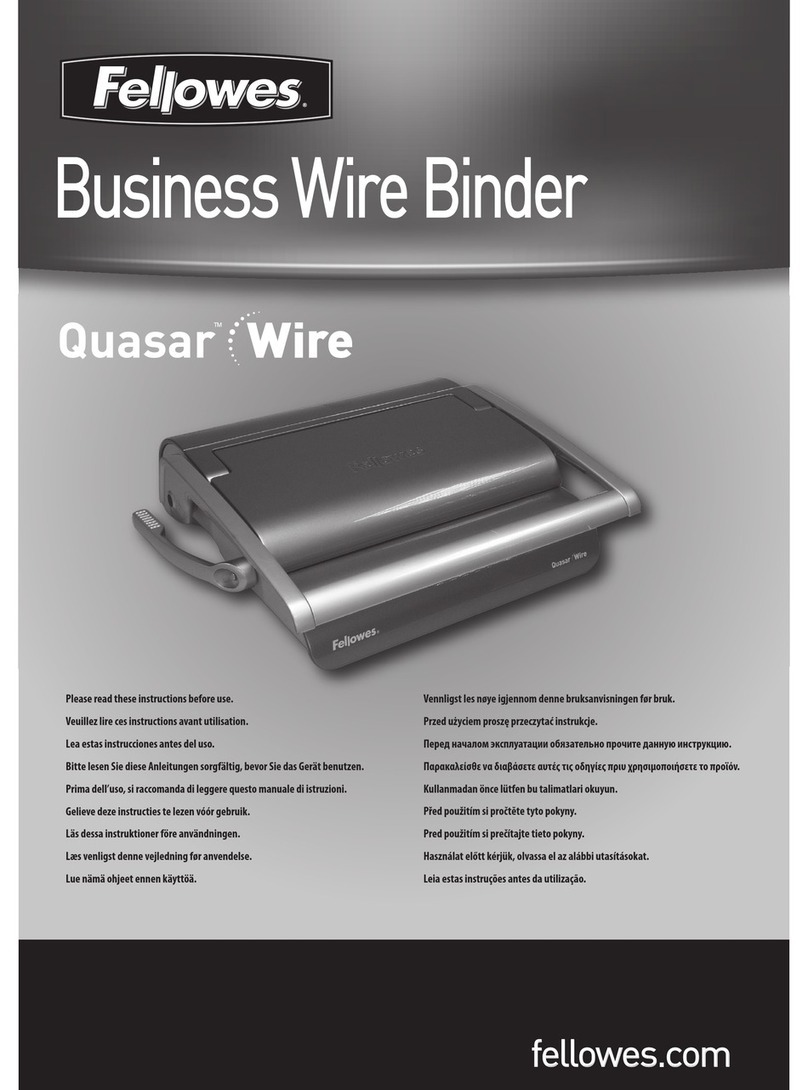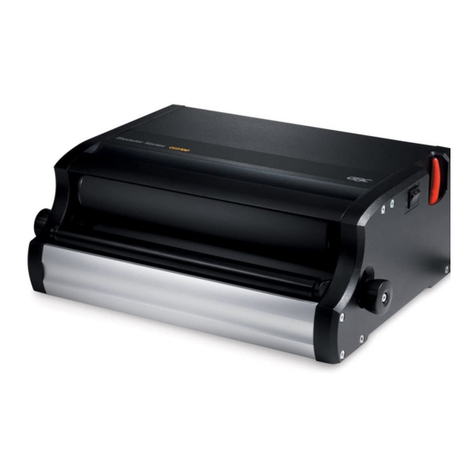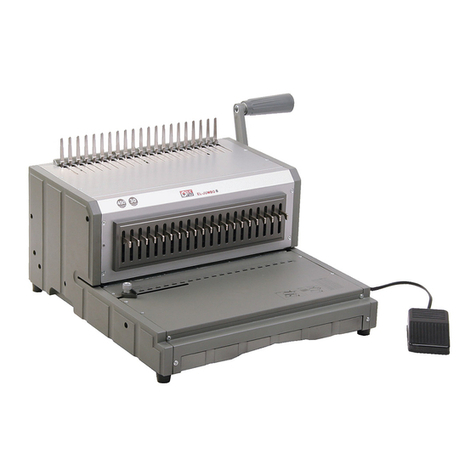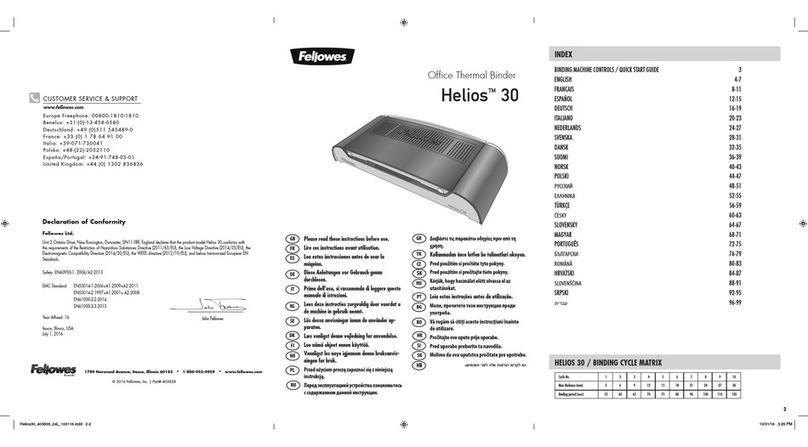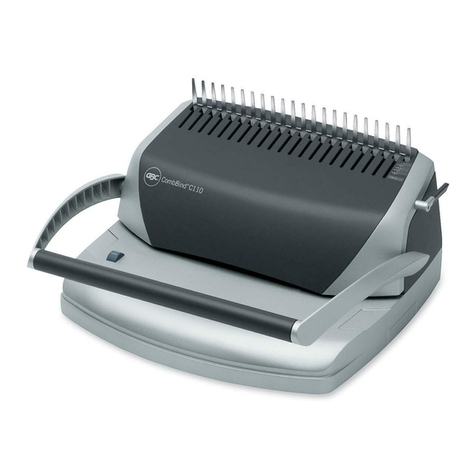TechniFold TRI-WEB-05 User manual

Web Spine-Hinge Creaser Instructions
Product Code TRI-WEB-05
www.TechnifoldUSA.com
Online store: http://store.technifoldusa.com

*** IMPORTANT ***
Handle With Care When Installing!
Yes, these precision tools are heavy duty but it IS possible to ding the
edges of the device and ruin the female creasing channel/rib holder.
Until they are safely installed on the holders, leave them in the foam
lined boxes in a safe work area.
Take your time when doing the installation.
Be sure the holder shafts are clean and free of burrs, and never, ever
force anything! Everything should install with hand pressure only.
If you have any questions or are not getting the results you
or take a look at the FAQ and Tech Support page:
http://www.technifoldusa.com/faqs-support/
Our products do not work like conventional tools, so what you may be
accustomed to doing may not be right for this product. So please, ask
away! We provide unlimited free tech support and will work to
overcome any obstacle or problem.
back to you as soon as possible, usually the same business day.

Spine-Hinge Creaser for Web Presses
Your web press Spine-Hinge Creaser can be used
two ways:
1. To produce 2 or 4 simultaneous creases for
perfect bound book covers or other similar
jobs requiring multiple creases or scores
2. To run individual creases
Running 4 creases
When running 4 creases, hinge width is fixed at
6mm (.25”) and spine width is infinitely variable.
The 4 units of the web spine-hinge creaser are
identical. When installed, the opposing unit must
be flipped so its channels run in the opposite direction (see photos following on
the following pages.)
There are 4 spine-hinge crease settings which are fixed in 1/4” pairs as shown in
the photos on the following pages. Although each setting is designed for an
approximate range of paper densities, it’s best to think of these as recommended
starting points.
It’s important to experiment to see what works best with the stocks you run. Once
you find a setting that you like, make a note of it for future reference. We’ve
included a crease setting log for your convenience.
Running single creases
There are 6 female channels available for single creasing. The dots adjacent to
the female channels indicate which ribs can be used in that channel. For
instance, a blue and a yellow dot mean you can run either a blue rib or a yellow
rib in that channel. Note: as mentioned before these are recommended starting
points based on our experience of what works best with various weights of stock.
You are by no means limited to that recommendation. You can for instance, run
an orange rib in any blue channel, or a blue rib in the widest yellow channel.
The male rib can be positioned in any of the four available rib slots, whichever is
most convenient.

Orange 1-dot
pairing
Use orange rib
Example: to use the Orange 1-dot setting, install an orange rib in the channel indicated
on all 4 units (left side of the pairing in the photo). Since each set of creasing units are
facing each other in the opposite direction, you get 2 creases, 6mm apart X 2 = 4
creases in total. You get 2 creases on each side of the sheet.
For Single Crease Work
Simply install the creasing rib you desire in any of the 4 rib slots, whichever is most
convenient. Then center the opposite unit over the appropriate channel.
There are a total of 6 female channels available. Each has a slightly different width.
The Orange 2-dot and the orange-blue dot channels are extra channels provided for
single-crease work and do not get used in 4-crease work.
Crease Setting Ranges (approximate)
Orange Rib (# M-33A) 70-160 gsm | text up through 60# cover | .004”—.007”
Blue Rib (#M-34) 100-250 gsm | text up through 100# cover | .006”—.010”
Yellow Rib
(
#M-33
)
250-350
g
sm
|
80# cover and heavier
|
.010—.018
Blue 1-dot pairing
Use blue rib
Note: orange rib
can also be used
Blue-Yellow 2-dot
pairing
Use blue or yellow
rib
Yellow 1-dot
pairing
Use yellow rib
Blue rib can also
be used here
Note: these 2 channels (orange 2-dot and orange-blue)
are for sin
g
le crease work onl
y
.

Orange 1-Dot Pairing
Lightest (thinnest) crease
Use M-33A orange rib
Blue 1-Dot Pairing
Light to medium crease
Use M-34 blue and can also use M-33A Orange
Blue/Yellow Pairing
Medium to heavy crease
Use M-34 Blue and can also use M-33 Yellow
Yellow 1-Dot Pairing
Heaviest crease
Use M-33 Yellow primarily; will also accept M-34
Creasing Rib + Channel Pairings Illustrated

To remove or change position
of a creasing rib, slide the
extraction tool under the rib at
the cutout. Gently pry up the
rib and slide the tool under the
rib and/or use your fingers to
remove the rib.
M-33A Orange Creasing Rib
M-34 Blue Creasing Rib
M-33 Yellow Creasing Rib

Tips on Selecting the Right Creasing Rib
Your new Spine & Hinge Creaser gives you the ability to control how your
perfect bound book covers will look and perform. There are several crease
combinations available and with a little experimentation early on, you will
find crease settings that are perfect for each of the jobs you run. Here are
some brief suggestions.
Always be sure to crease with the male creasing rib hitting the face
(outside) of the sheet in order to eliminate fiber
cracking. There could be exceptions to this ‘rule’ but in
most cases this will give the best result.
Always be sure to center the crease. The rib
should be precisely in the middle of the female
channel. Use the micro side-lay adjustment on the
holders for fine adjustments. Depending on your
installation, shine a light or hold a sheet of white
paper behind the creasers to visually line them up.
An off-center crease will be deformed and may not
perform properly when it gets to the binding line. It
will also prematurely wear the rubber creasing ribs.
Test first. Once you select your crease setting and before you fire up the
press, test some sheets. Engage the air actuator and set the depth. Take a
small sheet and run it through the creasers by hand. It won’t be straight but
it’s good enough to give you feedback on the quality of the crease. Make any
adjustments and re-test as needed until you are satisfied with the quality of
the crease.
What Does a Good Crease Look Like?
The inside bead of the crease should be smoothly rounded as shown in photo
at right. If visible tears start to appear, you probably have too much
pressure.
If the inside bead is wrinkled, you can try two things:
- Move to a thinner channel
- Try the next wider rib in the same channel
The outside of the crease should also be smooth and free of cracking or
tearing. Adjust the gap (pressure) as needed to get this result.
Use Minimum Pressure
More pressure does not necessarily make a better crease and it often makes
it worse. If added pressure starts to tear the inside of the sheet, back off the
pressure and try another setting.

Experiment with Various Creases
Use the enclosed Crease Setting Log as an operator reference. It also helps
to enter it in your internal job information system. Try various creasing ribs
and then make a note of the creasing rib that works best for each job or for a
particular stock.
If you run a wide range of paper stocks, initially this will take a little work but
it’s well worth it the long run.
Refer to your Crease Setting Log when you return to that job or that
particular stock. This will save you LOTS of setup time!

Frequently Asked Questions
for the Spine-Hinge Creaser to fit Web Presses
Which side of the sheet do I crease?
Technically, the correct way to score the sheet in
order to eliminate fiber cracking is the same as with
a die score—the male should be hitting the outside
(face) of the cover, so that the fold is going away
from the male. So the spines should be scored from
one side, the hinges from the other side. (photo
right)
However, sometimes customer preference dictates
how you crease (score) a particular sheet.
A Tip: experiment with various crease settings to
find out what works best for the jobs that you run. Then use the enclosed
Crease Setting Log to keep a record of what setting works best.
What if I still get fiber cracking?
Be sure to experiment with different creasing ribs. For instance, an 80#
cover from one mill might require a different setting than an 80# cover from
another mill. Also check that the female components are centered correctly.
How long should the creasing ribs last?
The creasing ribs should last 1/2 million to 1.5 million sheets or more,
depending on the weight of paper. Use the minimum pressure necessary to
get a good crease. A deeper crease is not necessarily better for eliminating
fiber cracking. It might be better to go to a different creasing rib rather than
apply excessive pressure.
When do I have to re-center the female components?
Whenever you move any component to a new position you need to re-
center that male/female pair. Don’t forget this important step!
What range of papers can I crease?
In general, the Web Spine-Hinge Creaser can be used on almost any stock
that is run on web presses, especially if it is used as a scoring aid to improve
folding quality. For the purposes of eliminating fiber cracking, you’ll probably
see best results on stocks in the .005” to .016” range.
For Technical Support
email: TechSupport@technifoldusa.com
or visit http://www.technifoldusa.com/faqs-support/
To Order Replacement Parts:
Call the Sales Office 973-383-7920 M-F 10-4 eastern
or online http://store.technifoldusa.com/

Crease Setting Log
Technifold USA
Sales Office: 973-383-7920
www.technifoldusa.com
Your Name:
Machine:
Type of StockFemale ChannelMale Rib UsedJob Number or NameDate
Notes
Print This FormEmail Tech Support
Table of contents
